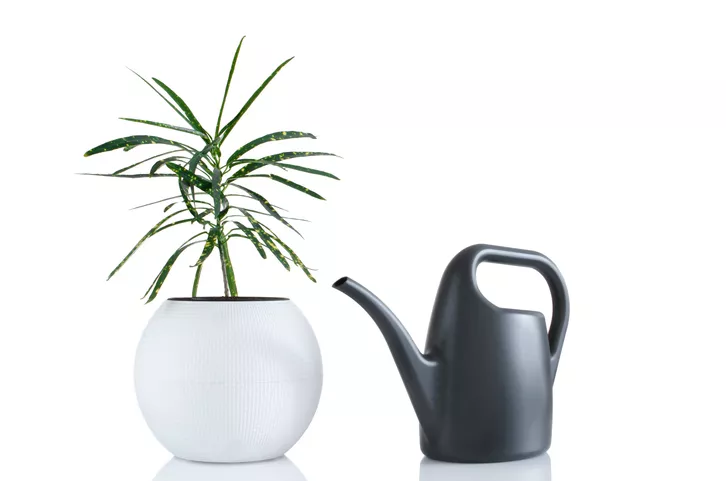You don't have to travel to distant countries to dream under palm trees. At the florist around the corner you can buy the beautiful Mediterranean ambassadors for little money. Unfortunately, palm trees are not entirely uncomplicated and sometimes the attractive plants take care of themselves after just a few weeks. With a little instinct and good care, however, they can often be saved.
 Most palm trees prefer a warm, humid environment
Most palm trees prefer a warm, humid environment
Palm trees like it warm
Palm trees are not ideal for a cool bedroom, as they require a constant temperature of 15 degrees and more. If this falls below this value during the night, the plants will grow poorly. It is better to put a palm tree that does not want to thrive in the warm living room.
Palm trees are sun-hungry
Palm trees love it when the sunlight caresses their fronds. There should be at least a few hours of direct sun every day. A location in front of a west, east or south window is ideal. If you cannot meet the plant's requirements, a plant lamp (€21.99) will compensate.
Dry air
Palm trees need a relatively high level of humidity. In heated rooms, however, this often drops below 40 percent, a value that even palm trees from dry areas can no longer tolerate. The tips of the fronds turn brown and the plant succumbs. Therefore, spray the leaves at least once a day. An indoor fountain or special air humidifiers can also improve the room values.
Underfloor heating means stress for plants
This heating is becoming increasingly popular because the warm floor creates an extremely comfortable room climate for us humans. For the palm, on the other hand, the warm underground is less pleasant. So that it does not wither, do the following:
- Use a very large planter.
- Put in one or more bricks.
- Place the flower pot with the palm tree on it.
- Fill in enough water so that the stone lies in the liquid but does not reach the planter.
The underfloor heating allows the moisture to evaporate and circulate around the foliage.
waterlogging
Moisture trapped in the root ball is the palm tree's greatest enemy. Their roots begin to rot, water can no longer be transported and the plant dries up. This can be remedied by a drainage layer of expanded clay a few centimeters thick (€19.73) and a sufficiently large water drain covered with a shard of clay.
pests
If all the basic conditions are right and the palm tree still takes care of it, sucking insects or fungal infestation are usually to blame for the misery. Examine the palm tree thoroughly and treat the growth with an appropriate chemical agent.
tips
Individual fronds that first turn brown and then dry up are normal. Please only cut them off when they are completely dry. They are used by the plant to store nutrients.